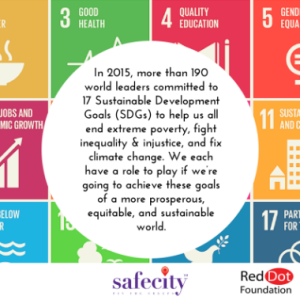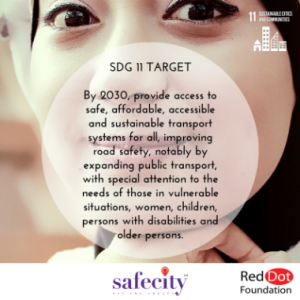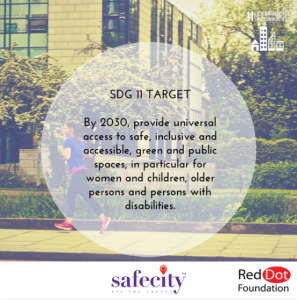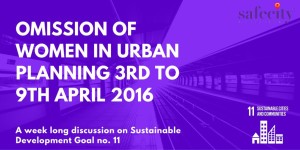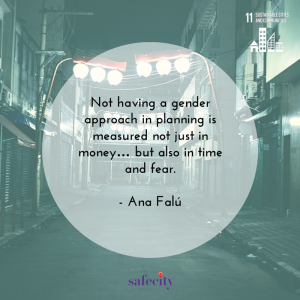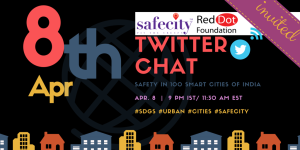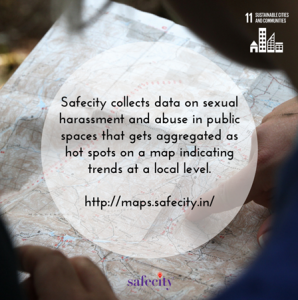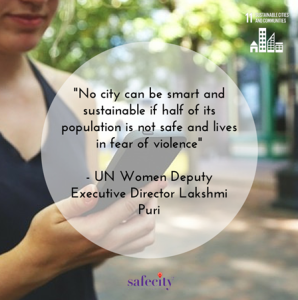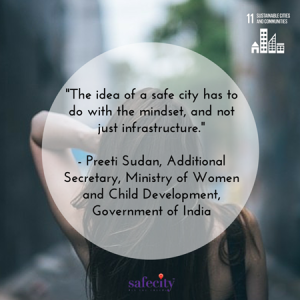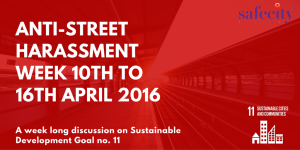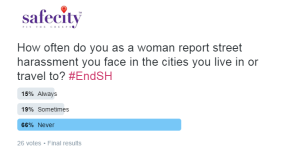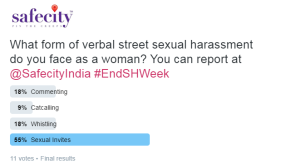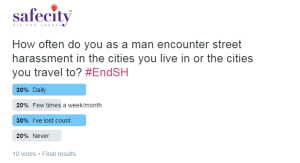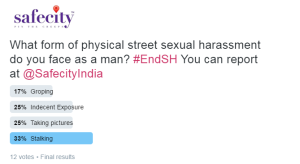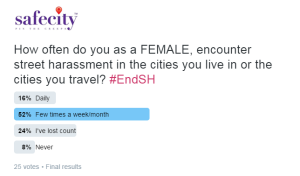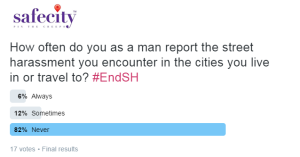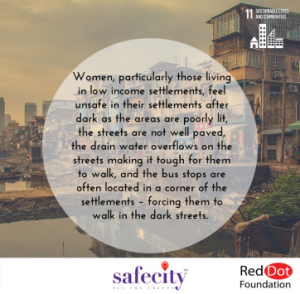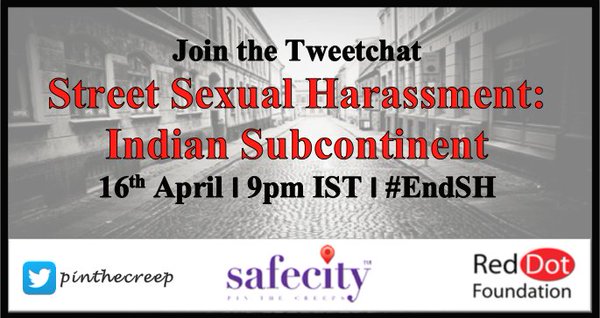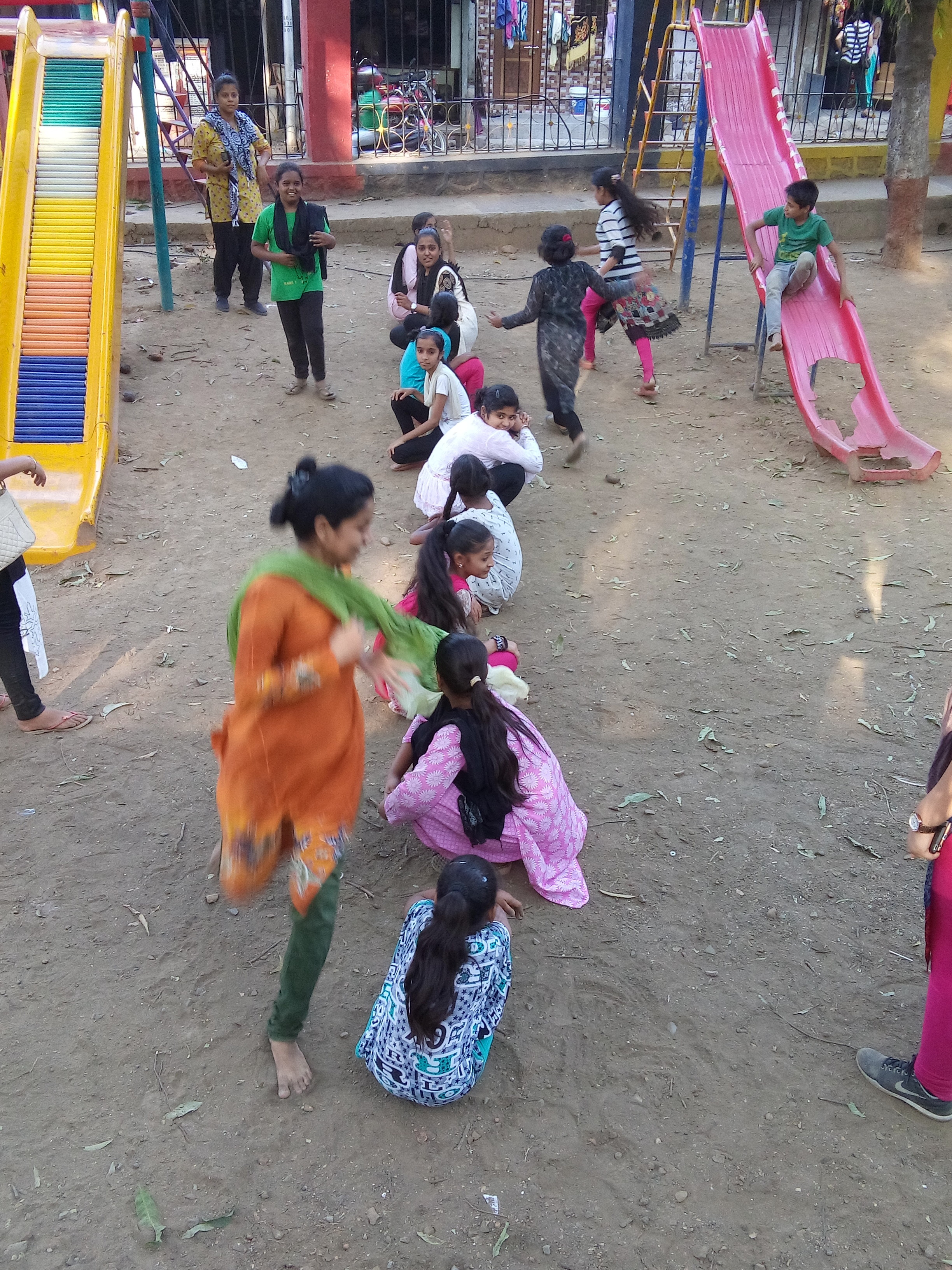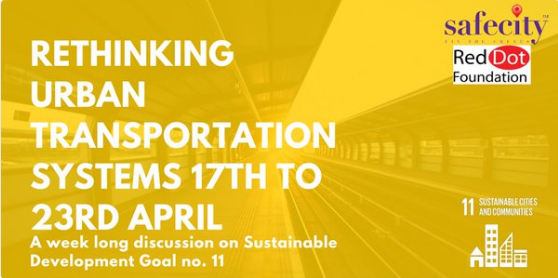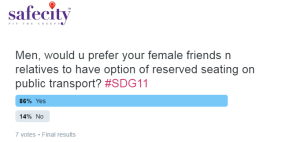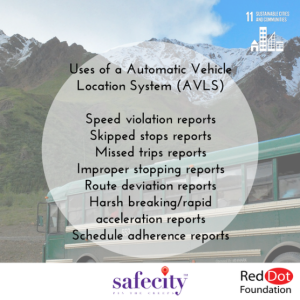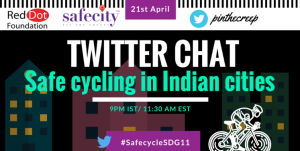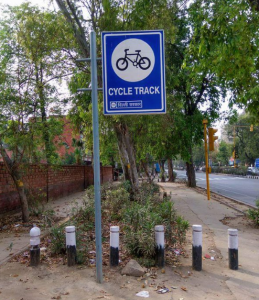SDG 11 : Sustainable Cities & Communities – An Overview

For the entire month of April, Safecity made a case for safety, especially women’s safety in our cities and communities – one of the targets of UN’s Sustainable Development Goals. As a part of this worldwide effort, our focus was on Goal 11 – ‘Make cities inclusive, safe, resilient and sustainable’.
The brilliant Anuja Sawant @anujasaw curated our Twitter account twice in April, educating & facilitating discussions on SDG 11’s targets, relevance and impact.
Women aren’t included in the decision making and planning processes of cities, infrastructure, amenities, transportation, safety, health, etc. Hence, urban cities are not experienced in the same manner by men & women. This leads to inequalities in countless respects between the genders, having paved the way not only to a huge gender gap but also to dangers that threaten the well-being of all citizens.
Impact of Omission of Women in Urban Planning –
- Inaccessibility
- Restrictions
- Health Problems
- Inadequate Sanitation facilities
- Patriarchal Leadership
- Unequal Opportunities
- Hindered financial, educational, social & mental development of genders
Points of Action –
- Women are to be included in leadership positions and all decision making & planning processes.
- Infrastructural planning is to be implemented around the needs & accessibilities of all genders.
- Facilities & Amenities are to be provided and shaped for all.
- Transportation to be planned and scheduled keeping the needs & safety of all citizens in mind.
- Safety mechanisms and outreach to be planned & implemented for all genders.
- Sanitation & Health to be upgraded and maintained.
- Improved connectivity even in isolated areas.
- Practice of Gender Equality
Tweet Chat on Safety in 100 Smart Cities of India –
This Tweet Chat focused on safety, of especially women, in the 100 smart city project of India.
The whole chat is compiled here.
Key Points from the Chat –
- A smart city is safe, energy efficient, has good infrastructure, sanitation, governance, mobility, community based groups for action, accessible public spaces.
- Quality services must be delivered in an efficient manner.
- Women’s opinions should be taken into account while deciding safety measures.
- Easy access to legal information &transport.
- Urgent need for data, its gathering, management and applicability.
- Data to be mined for meaningful action to support pillars of smart sustainable growth & governance.
- Regulations to secure smart city networks.
- There is a need for strong laws.
- Changes that need to be brought about – accessibility & comfort for all citizens, tech orientation, green, safe and trackable transportation.
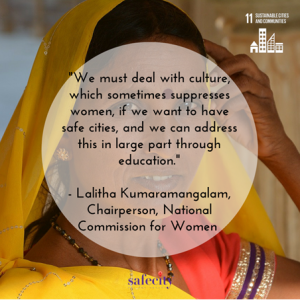
- These are also needed – Public awareness & enforcement campaigns, collective sharing of responsibilities, penalizing the bad, rewarding the good.
- Slums should be replaced by / upgraded to affordable and clean housing.
- Reduce poverty gap.
- Week II ( April 10 – 16 ) :
Vandita Morarka @vanditamorarka, Safecity’s Youth Outreach Co-ordinator, curated our Twitter account for this week.
Amazing activists and individuals around the world work hard year-round to make public places safer but once a year, Stop Street Harassment aims to help amplify these voices and get global mainstream media attention for the issue of Street Harassment by collectively speaking out together during the Anti – Street Harassment Week .
Impact of Street Harassment –
These polls were conducted on Safecity’s Twitter account.
- 7-8/10 women in Mumbai city are subjected to some form of sexual harassment in public places every day.
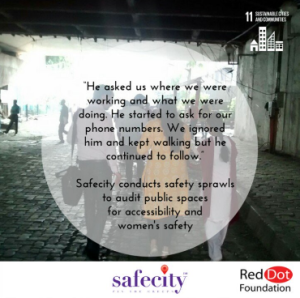
- Women with disabilities are 3 times more likely to be sexually abused than their non- disabled counterparts.
- 90% of women who experience sexual harassment do not register a police complaint.
- Street harassment has become the norm. It is not viewed as a crime.
- Women are dealing with harassment through lenses of apathy & tolerance.
- Women don’t report harassment because of lack of information, difficulty in reporting, fear of ridicule.
- A study carried out by the The High Council for Equality between Women and Men found that 100% of 600 women observed in Seine-Saint-Denis and Essonne, two areas in the outer suburbs of Paris, have been victims of sexual harassment on public transportation.
- Women’s-only compartments in trains are common and well implemented in all major Indian cities.
- Mindsets especially those of people in leadership & political positions shun sexual harassment and blame the victims.
Points of action –
- Conduct safety sprawls to audit public spaces for women’s safety and accessibility. ( Safecity conducts these regularly )
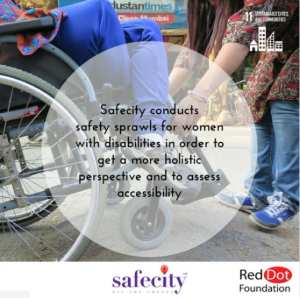
Safecity has conducted Safety Sprawls with women with disabilities in collaboration with Point of View.
- Public spaces to be made safe and accessible to all, especially women and girls.
- Community involvement and movements through creative arts or action can serve as a big deterrent to street sexual harassment.
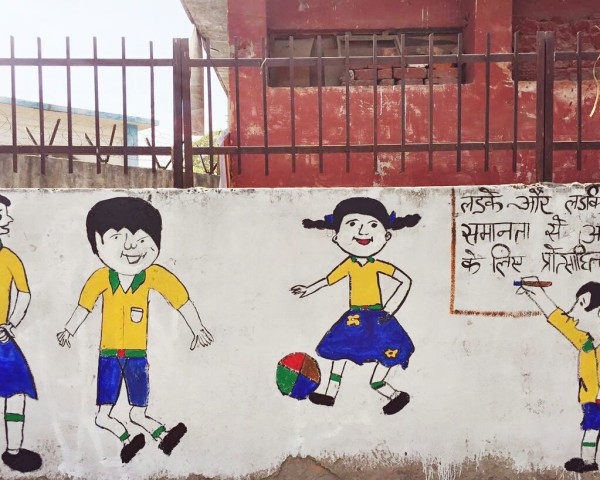
This mural at Sanjay Camp, Delhi is a part of the efforts of the community’s youth to bring about further changes in their locality and was an activity for International Anti – Street Harassment Week.
- Spread awareness among people on laws relating to sexual harassment and abuse, statistics, explain procedures of reporting and anonymity, intolerance and action.
- NGOs can play an important role in bridging the gap between policy formulation and implementation. They could play an advisory role in the Government.
- Educate citizens on the legal process. It is not expensive. Such crimes are recognised as crimes against the State. The Government appoints a Public Prosecutor, no fees to be paid.
- Utilise digital spaces more effectively for prevention of sexual harassment on and off the street.
(We at Safecity are crowd-sourcing stories of sexual harassment on our reporting platform where one can report anonymously or unanonymously. These reports are sent to the Police with whom Safecity works closely. This data is also utilized to track trends and help communities develop sustainable solutions.)
- Implementation of a 24×7 helpline & outreach number and accessible SOS centres.
Tweet Chat on Street Sexual Harassment : Indian Subcontinent –
This TweetChat focused on street sexual harassment with respect to India and how harassment in the country differs from that in others.
The whole chat is compiled here.
Key Points from the chat –
- Cultures in the Indian subcontinent worship & harass women simultaneously.
- Women modify their social behaviours & general way of life to account for street harassment.
- Women are forced to stay away from public spaces due to fear.
- Futures are shaped by the various restrictions on mobility, education, assertion, inaction.
- Even though India recognises a lot more offences of sexual harassment & abuse, there is weak enforcement of laws, long trials and distrust of citizens in the judiciary system.
- People must be encouraged to report crimes to the authorities.
- SH must be tackled at the grassroot level. Education, sensitisation, discussion, movements, everyday actions.
- Community interventions are great because they deal with the problem in the immediate vicinity, develop positive attitudes towards the issues, encourages involvement of men & boys, discourages harassment, educates people about harassment & against it.
- Collectivized community policing to prevent street sexual harassment can be tried.
- Defeating SH is a herculean task that has to start from home and school first.
- Reclaiming of public spaces by women.
Read more about this here.
- Better planning and management of city spaces is needed.
- Badly lit roads, parked cars creating unsafe spaces in narrow lanes and lack of patrolling in all areas.
- Allow technology to enable & support law enforcement.
- Active bystander engagement.
You can read about all the activities conducted by Safecity for International Anti-Harassment Week here .
- Week III ( April 17 – 23 ) :
Anuja Sawant returned as a primary force to bring the discussion on SDG 11 to a close. Urban transportation while speedy are inaccessible to various hindrances.
Impact of Current Urban Transportation –
- Delhi is fourth most dangerous city in the world for women to take public transport.
- Women – only compartments in local trains & metros.
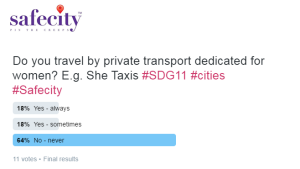
- People predominantly feel unsafe in Delhi and safe in cities like Mumbai,
- Lack of reliable transportation in Banglore, Pune.
- Availibility of carpooling agencies but they are unsafe and not reliable.
Points of Action –
- Use of Automatic Vehicle Location System ( AVLS ) in all cities.
- Strategic planning of transportation to connect long and short distances in a safe, efficient, affordable, 24×7 & reliable manner.
- Maybe make roads and public transport safe upgrading transportation.
- Safe and clear paths for walking, cycling.
- Carpooling after screening individuals.
- Make travelling safe for all.
Tweet Chat on Safe Cycling in Indian Cities –
This tweet chat focused on cycling in Indian cities, its joys and the many hindrances to it due to safety, traffic regulations, infrastructure, public opinion, etc. The whole tweetchat is compiled here.
Key Points from the Chat –
- Everyone loves cycling! Some use cycles to cover short distances while some even cycle to work.
- Current cycling lanes if even present in a city,are in a pathetic condition or aren’t well made and planned. (E.g. Mumbai, Delhi, Ahmedabad, Pune)
- There is no parking for bikes.
- People stare if you are anything less than a professional cyclist. It’s not seen as a mode of transport/ recreation.
- Have to be wary of sexual harassment due to ‘clothing’
- For women, bike routes need to be organised around practical urban destinations to make a difference.
- Feeling of being unsafe.
- Aggression and disrespect from other modes of transport.
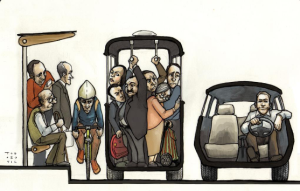
Art and Image Credit : Fabian Todorovic
- Get more cyclists on the road.
- Introduce cycle licenses to gauge the amount of cyclers and plan infrastructure & traffic rules accordingly.
- Cycling should be promoted by advertisement & incentives by the Government.
- Culture, community, design and vision can bring transformation & change in cycling in India.
More than half of the world’s population now live in urban areas. By 2050, that figure will have risen to 6.5 billion people – two-thirds of humanity. Sustainable development cannot be achieved without significantly transforming the way we build and manage our urban spaces. This change begins with the authorities and each one of us. We are responsible for the execution & success of SDG 11.
With this, Safecity’s coverage of SDG 11 comes to a close. Follow us @pinthecreep to keep up with the SDGs and more.

